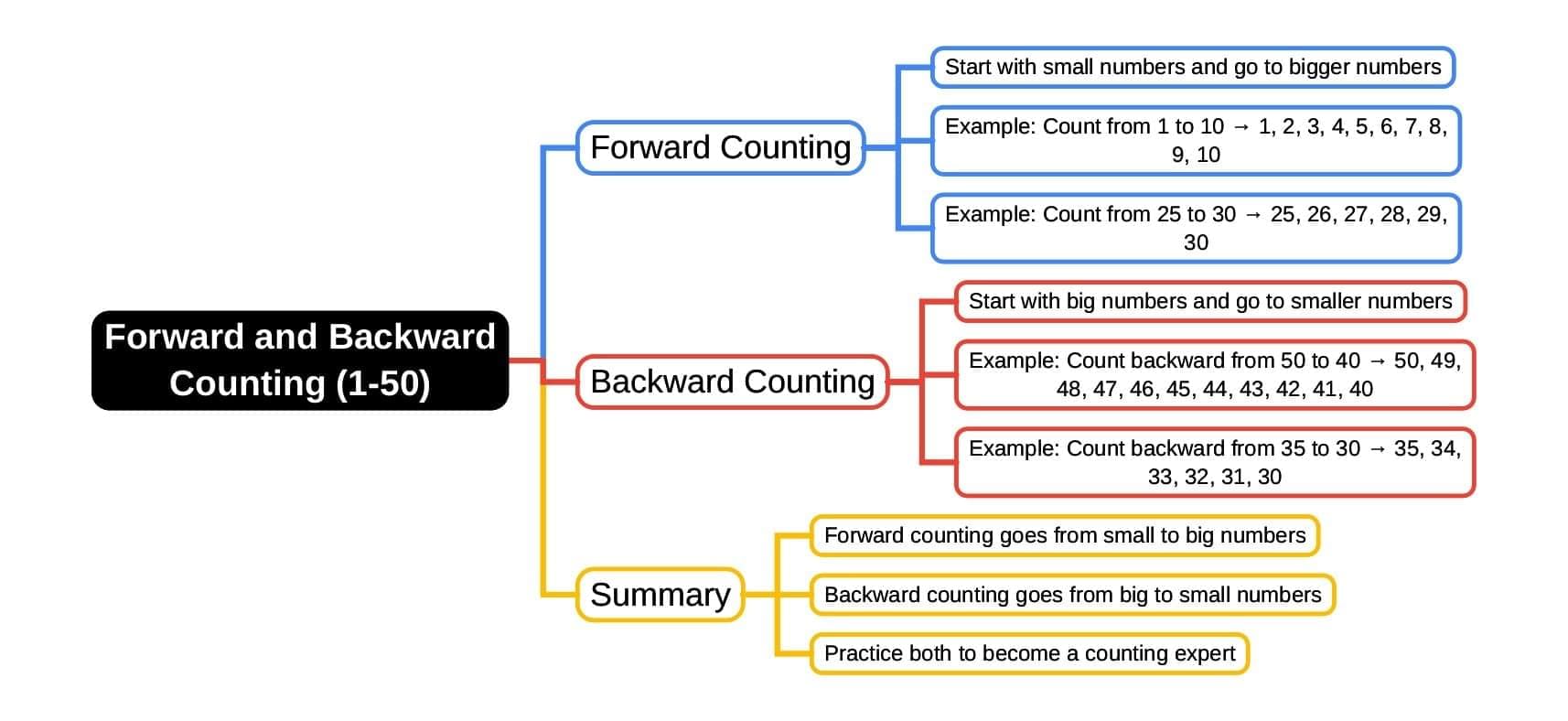LKG Exam > LKG Notes > Maths for LKG > Mind Map: Forward and Backward Counting (1-50)
Mind Map: Forward and Backward Counting (1-50) | Maths for LKG PDF Download

The document Mind Map: Forward and Backward Counting (1-50) | Maths for LKG is a part of the LKG Course Maths for LKG.
All you need of LKG at this link: LKG
|
40 videos|157 docs|5 tests
|
FAQs on Mind Map: Forward and Backward Counting (1-50) - Maths for LKG
| 1. What is the importance of forward and backward counting for young children? |  |
Ans. Forward and backward counting helps young children develop numerical fluency, understand the concept of numbers, and enhance their cognitive skills. It lays the foundation for more complex mathematical concepts such as addition and subtraction, as it teaches them the sequence and relationship between numbers.
| 2. How can parents assist their children in learning to count from 1 to 50? |  |
Ans. Parents can assist their children by engaging in fun counting activities, such as counting objects around the house, singing counting songs, or using educational games that focus on numbers. Consistent practice and positive reinforcement can also motivate children to improve their counting skills.
| 3. What strategies can teachers use to teach counting effectively in the classroom? |  |
Ans. Teachers can use visual aids like number charts, counting blocks, and interactive games to teach counting effectively. Incorporating hands-on activities, such as counting during group activities or using stories that involve numbers, can make learning more engaging and relatable for students.
| 4. Why is it essential for children to learn backward counting alongside forward counting? |  |
Ans. Learning backward counting is essential as it helps children understand the concept of subtraction and develops their problem-solving skills. It also aids in improving their memory and concentration, as they must recall numbers in reverse order, which is a cognitive challenge that enhances their overall mathematical understanding.
| 5. At what age should children typically start learning to count, and how can this be introduced? |  |
Ans. Children typically start learning to count around the age of 3 to 4 years. This can be introduced through playful activities, such as counting toys, reading number books, or using everyday situations to practice counting. Making it a fun and engaging experience will encourage children to learn and enjoy numbers.
Related Searches














